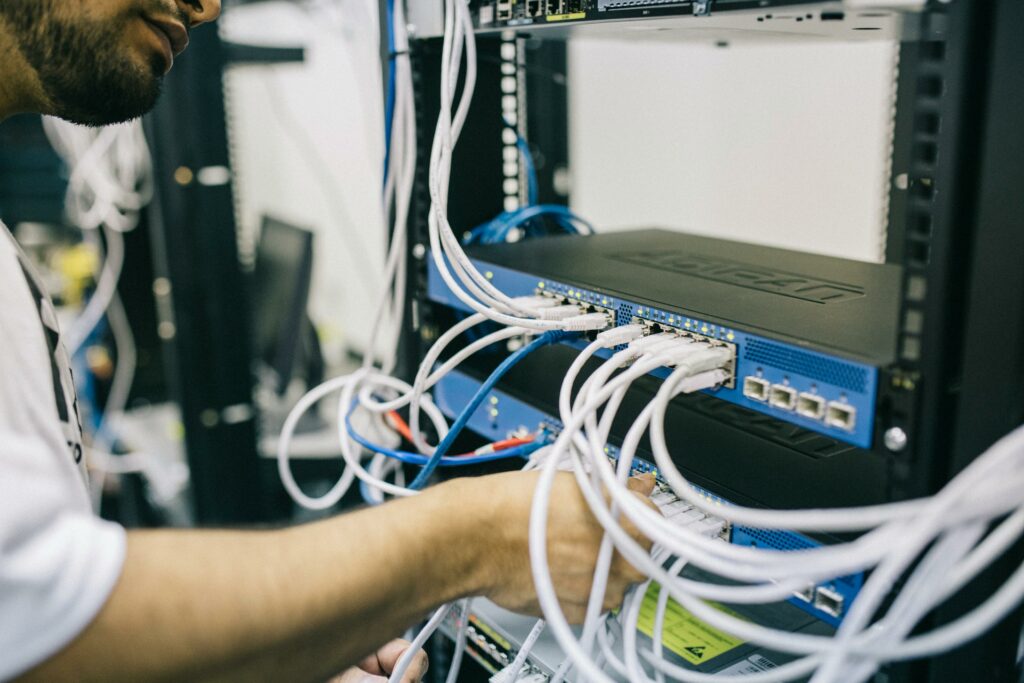Artificial intelligence (AI) is based on large and varied datasets to train models and enhance functionality. Though AI often works across borders, data protection regulations such as the EU General Data Protection Regulation (GDPR) impose stringent controls on transferring personal data abroad.
The question is evident: how do businesses employ global AI systems and continue to comply with the GDPR cross-border data transfer principles? It is essential to understand the link between AI and personal data and its impact through the legal landscape governing cross-border transfers.
Understanding the AI and the GDPR Landscape

Artificial intelligence systems will typically need to use humongous amounts of data, of which may include personal data. This data is typically obtained from various jurisdictions and processed using cloud platforms, data centers, and development teams in various countries. The worldwide infrastructure complicates the fulfillment of the GDPR since it inhibits the transfer of personal data beyond the European Economic Area (EEA) and United Kingdom.
The GDPR is grounded in fundamental principles of lawfulness, fairness, transparency, limitation of purpose, and data minimization. It also requires accuracy, limitation of storage, integrity, confidentiality, and accountability. These principles should be adhered to by any AI system that involves personal data even when data is transported.
Cross-border data transfers happen when personal data is moved from the EEA to a third country. These are addressed by Chapter V of the GDPR, which dictates the legal frameworks organisations must obey. Since most AI systems are international data processing, virtually all of them are confronted with this regulatory challenge.
Focal Compliance Challenges in Cross-Border AI Projects
There are a few challenges that make it hard to regulate cross-border data in AI:
- Terabytes of information: AI systems read text, images, video, audio, and behavior data in volumes that older compliance procedures find difficult to keep up with. It’s no small challenge to collect, categorize, and safeguard these datasets across borders.
- Pseudonymization risks: So-called anonymized data can in fact facilitate re-identification, particularly when combined with additional datasets. It is important to understand the difference between pseudonymized and anonymized data.
- Lack of transparency: Most AI systems, especially deep learning-based systems, are “black boxes.” This uninterpretability may hinder the ability of organizations to show compliance with the GDPR, especially purpose limitation and data minimization.
- Shifting rules: Regular updated guidance from national authorities and the European Data Protection Board (EDPB) on AI, transfers abroad, and the way the two interoperate. Just requirements mount with the arrival of legislation such as the EU AI Act.
- Third-party risk: Third-party data suppliers, cloud vendors, and outsourcing data processors are all more likely to be in the AI supply chain. Unless they are properly managed, they bring inherent third-party risk through non-compliance, data loss, or unauthorized transfers.
Legal Frameworks for GDPR-Compliant Cross-Border Transfers
The GDPR provides a range of legal frameworks for cross-border transfers of personal data beyond the EEA, depending on conditions and limitations.
- Adequacy decisions are among them. The European Commission will be in a position to determine that a non-EEA nation ensures “adequate” protection for personal data, and data can flow freely. These decisions have been granted to Japan and Switzerland, and the same has been granted to the United States under the new EU–U.S. Data Privacy Framework. Adequacy decisions are not absolute, however, and can be invalidated, as was the invalidation of Privacy Shield.
- For organizations in countries not issuing an adequacy decision, Standard Contractual Clauses (SCCs) are the most used. Contractual clauses maintain international data transferred from being reduced below EU levels. Organizations must perform Transfer Impact Assessments and introduce additional safeguards since the Schrems II judgment, in order to lawfully use SCCs.
- Binding Corporate Rules (BCRs) is a further possibility for multinationals. They are internal codes of conduct that have to be approved by a data protection authority and are legally enforceable against the corporate group. It is a scalable solution to implement for intragroup data transfers, but it may be time-consuming and costly to obtain the approval.
- The GDPR also has limited derogations for certain situations, including where the individual provides unambiguous consent or where a transfer must be conducted in order for a contract to be formed. Exceptions are few and not to be generalized or bulked.

Practical Steps to Remain Compliant
To effectively administer cross-border data transfers, follow these best practices:
- Map data flows: Determine where personal data comes from, is processed, and travels.
- Perform Data Protection Impact Assessments (DPIAs): DPIAs for riskier AI projects ensure assurance of risk identification in the areas of discrimination, bias, and data protection and transfer risk assessment.
- Improve data governance: Establish policies and roles that ensure accountability to operating, technical, and legal teams.This ensures consistency and accountability when dealing with personal data.
- Enforce security controls: There must also be organizational and technical controls. These include secure development of AI models, access controls, pseudonymization, and encryption. Security audits and penetration tests done on a regular basis can combat threats that can be used in performing cross-border transfers.
- Manage third parties: Secure good data processing terms and ensure all suppliers comply with the GDPR. Any AI supplier or cloud provider dealing with your personal data on your behalf must be subject to rigorous due diligence. This includes negotiating good DPAs and ensuring vendors apply GDPR-level controls.
- Train your staff: Make sure staff is educated about their part to play with regard to AI and international processing of data. A specific incident response plan also needs to be created to handle any AI system-related breaches.
Readiness and Regulation

Regulatory requirements are changing. The EU AI Act and industry-specific guidelines from the EDPB and others will keep transforming what looks like compliance with AI. Leading-edge businesses are already constructing governance structures in accordance with the GDPR and these new rules. Technologies such as data flow mapping automation, real-time risk management, and Transfer Impact Assessments run on a regular basis become typical. Legal, technical, and compliance staff need to interact so that AI ingenuity is converged into regulatory requirements.
Conclusion
Cross-border transmissions of AI data under the GDPR is not impossible, but difficult. With good understanding of the regulatory frameworks, operating on high-risk subjects, and adopting good mitigations, organizations can deploy effective AI technologies in immaculate compliance.
Creating AI responsibly involves creating it legally. Now is the time to audit your cross-border data transfer processes, enhance your governance structure, and embed compliance in all areas of your AI work.
